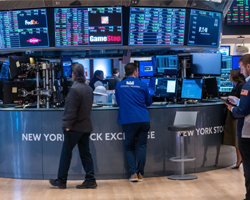Japan's Inflation Hits 41-Year High, U.S. Treasury Yields Decline, and PCE Inflation Report Looms | Daily Market Analysis

Key events:
- USA – Core PCE Price Index (MoM) (Jan)
- USA – New Home Sales (Jan)
The latest GDP data from the U.S. showed that the U.S. economy grew 2.7% in Q4, not 2.9% as analysts had anticipated. Softer economic growth might have helped ease inflation and softened the Fed's hand. That didn't happen, however, as the GDP Price Index, another measure of inflation that was released along with the GDP data, showed that inflation fell in Q4, but fell much less than expected, fully reflecting the CPI and PPI data released last week.
The combination of slower-than-expected growth and higher-than-expected inflation is the worst possible outcome, and we may see the latter reflected in corporate earnings.

Companies in the S&P 500 index have already reported their results, and earnings fell 1% in the last quarter. At first glance, that's not a good number, but those earnings compare to post-pandemic growth, and despite the drop, they remain strong.
The question is how far they will fall. It will depend on several factors, including how aggressively the Fed continues to tighten policy. How aggressively the Fed continues to tighten policy will depend on how stable inflation is.
For the rest of the week, we have one more important indicator to watch is the U.S. PCE index, the Fed's favorite measure of inflation. Given previous inflation data, we know that inflation has certainly weakened, but not as much as expected.
Unless there is a big surprise, there should be no explosive market reaction to the slightly higher-than-expected PCE index.
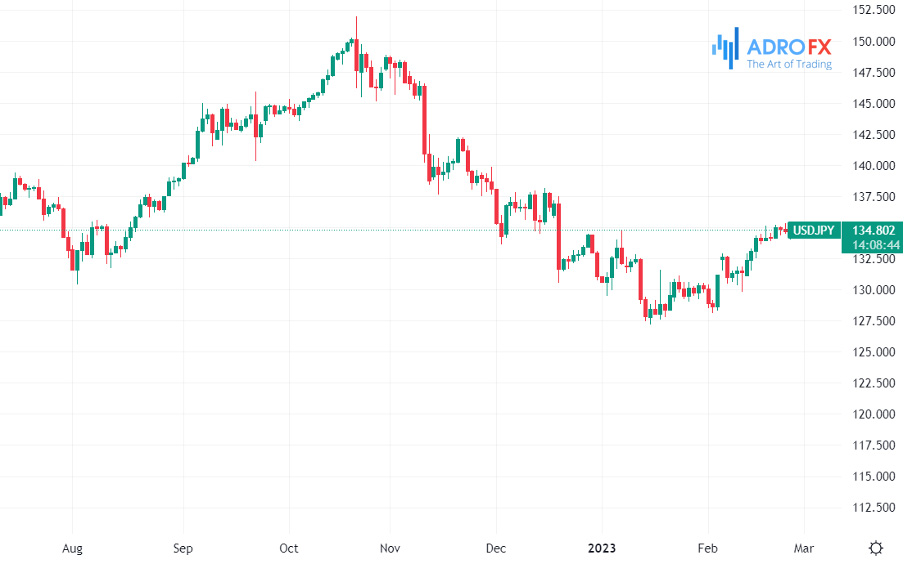
There is one other thing that is likely to help stocks hold their ground, and that is a decline in U.S. yields. One factor influencing the decline in U.S. yields is the growing geopolitical tension between the U.S. and China – after China made its support for Russia loud and clear this week. These growing tensions certainly increase the flow of funds into U.S. Treasuries and discourage hawkish pricing by the Fed. Thus, U.S. 2-year and 10-year bond yields are down from their peak earlier this week.
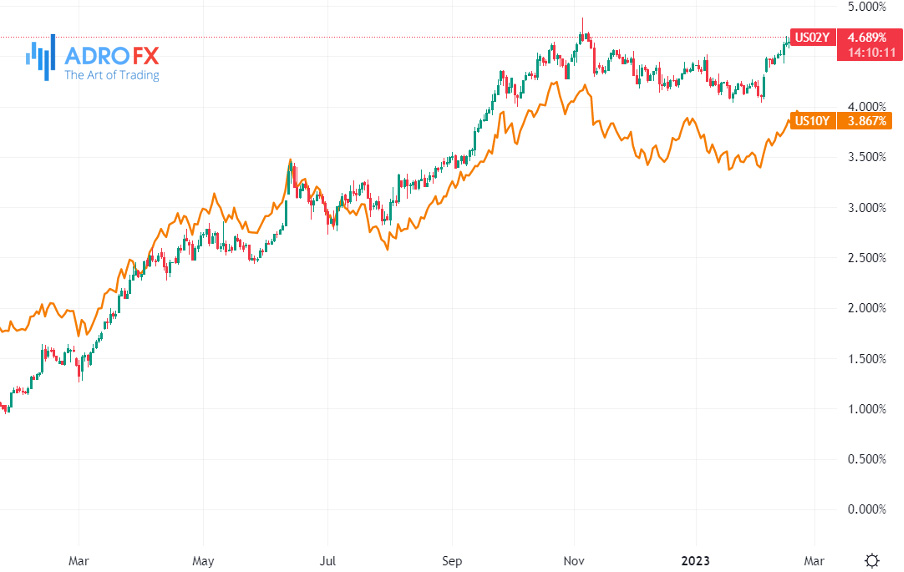
European stocks rose, and the euro fell on Thursday, even though the latest euro-area inflation data showed core inflation hit a record high.
Rising inflation is usually an incentive for European Central Bank (ECB) hawks to raise rates on the assumption that the ECB will raise rates more decisively. The latter should affect stock valuations and support the euro.
But the opposite is happening because the Fed and the dollar are the main drivers of the market. Thus, the EUR/USD fell yesterday to 1.0577, while European stocks were on the rise. For instance, the DAX index is now at the pre-war level while the latest data is not too encouraging for the German economy.
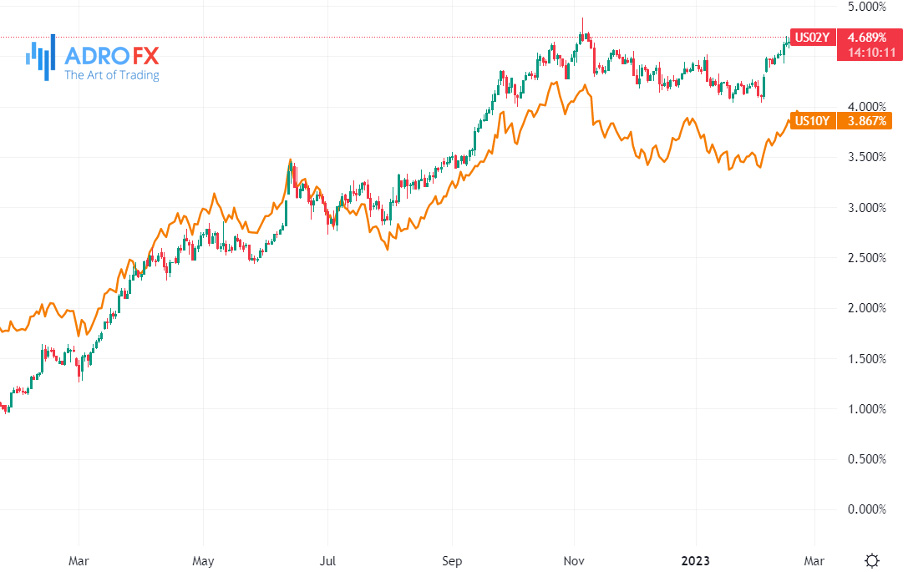
European exports are recovering to pre-pandemic levels, but German exports are clearly lagging behind the area average. Spain and Italy are doing much better than their German counterparts. Why? Because the energy crisis has negatively affected German manufacturing, while the post-pandemic recovery is good for Spanish and Italian tourism. As a result, the underlying data are strong, but the underlying factors warn that Eurozone growth may be vulnerable. Stagnant inflation and a hawkish ECB stance are the main risks to the actual rally in European equities.
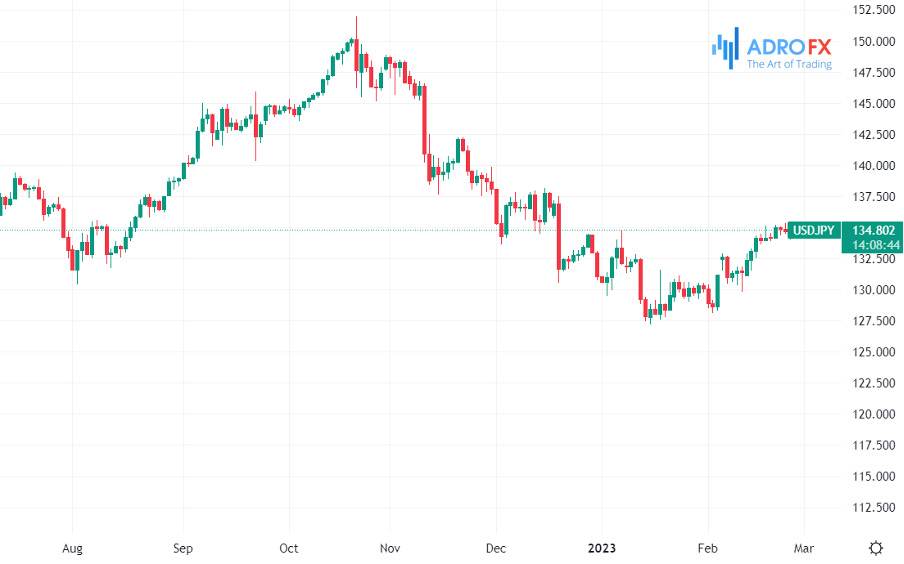
USD/JPY daily chart
Speaking of inflation, data released this morning showed that inflation in Japan rose to 4.3%, a 41-year high, and gave a swift jolt to the yen, sending USD/JPY down to 134. But we know that the Bank of Japan (BoJ), under its new Governor Ueda, is not necessarily concerned about rising inflation. The BoJ prefers to keep rates at zero for now, and that should continue to play into the USD/JPY bulls' hands, while Fed members continue to show the world how serious they are about taming inflation.


